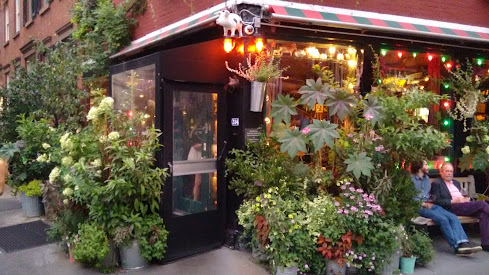 |
| The New Jersey chapter of the American Society of Landscape Architects 2023 annual conference - Atlantic City |
by Mateja Mihinjac
Safety and crime prevention frequently evoke mental images of CCTV, gates, locks and the police. Crime prevention and security professionals (myself included) are often guilty of putting on the thinking hats of potential offenders as we develop solutions. Instead of focusing on the overall liveability of a place, we too often recommend solutions for places that prevent undesirable activities and produce sterile and uninviting places for desirable uses.
I recently spoke about Crime Prevention Through Environmental Design (CPTED) at the 2023 Annual Meeting of the New Jersey chapter of the American Society of Landscape Architects (NJASLA) in Atlantic City. I made it clear through my keynote address that safety and a sense of place can coexist. The conference’s theme – Sense of Place offered a great opportunity to discuss this conundrum.
While feeling somewhat out of place as a criminologist amongst landscape architects, I was pleased to have had the opportunity to offer some basic understanding of CPTED. I was especially excited to discuss its application to landscape architecture. These professionals are in an ideal position to ensure that places are not only attractive and aesthetically pleasing but also safe, inviting and inclusive thus inducing a sense of place.
 |
| Bright colour, busking, people watching, and fun activities in the Queen Street pedestrian mall, Brisbane, Australia - sometimes a sense of place can involve buskers |
SENSE OF PLACE
Sense of place is generally associated with positive perceptions of places. The attributes that contribute to a sense of place deal with the emotional, cultural and historical connection to that place.
Sense of place is also associated with factors that make it special and unique and that foster sense of belonging to that place. A sense of place emerges in locations where people get attached to the space and where they love to spend time. It is a place that they identify with.
So how can we create a sense of place through CPTED?
In 3rd Generation CPTED, Greg Saville and I emphasise the importance of designing places and building neighbourhoods that offer more than basic amenities for their users and inhabitants. Traditional 1980s CPTED (1st Generation CPTED) focused on preventing crime opportunities, not on overall liveability, and it often led to target hardening and hostile architecture (in many places, it still does).
For people to form attachments and connections to places they need to feel part of those places. This can be achieved most powerfully when users are involved in the design and activities of those places.
Our work in SafeGrowth teaches us that applying all three generations of CPTED offers a more powerful way to integrate the elements for safe, inclusive and inviting places.
 |
| Greenery and places to sit comfortably can offer a respite from busy streets - Greenwich Village, New York |
THE CPTED LINK
While 1st Generation CPTED helps us address the specific concerns that offer opportunities for crime in small spaces, 2nd Generation CPTED goes beyond that with its neighbourhood focus. It helps us address the underlying social conditions and it deals with the neighbourhood dynamics that lead to disadvantage, disengagement and lack of interactions between people.
The latest variation on the CPTED theme is 3rd Generation CPTED. It focuses on sustainable liveability outcomes and aims at addressing the advanced-level needs of neighbourhoods and those who dwell there. Because it is directly tied to the highest level of psychological and emotional needs and desires, 3rd Generation CPTED is closely associated with fostering a sense of place. Linked to Abraham Maslow’s hierarchy of needs, (and supported by modern research in developmental biology and neuroscience), the hierarchy of needs is a new way to think about neighbourhood health and safety.
This full, holistic version of CPTED offers a powerful tool for designing inviting places that foster identity, offer ample opportunities for socialising, and create a positive sense of place. This is especially the case when the users of those places are directly involved in the community-building process.
 |
| Dismal landscaping will detract from a sense of place - unsafe behaviour can follow |
CONCLUDING THOUGHTS
This holistic CPTED thinking directly translates into one component of SafeGrowth that utilises all three generations of CPTED. However, as a neighbourhood planning method, SafeGrowth takes this a step further. It trains neighbourhood residents and builds their capacity to identify neighbourhood problems and create solutions, thus fostering the local community's sense of place and belonging.
Landscape architects and planners must become integral members of multidisciplinary neighbourhood teams to help the residents realise their vision for safe and liveable places.

